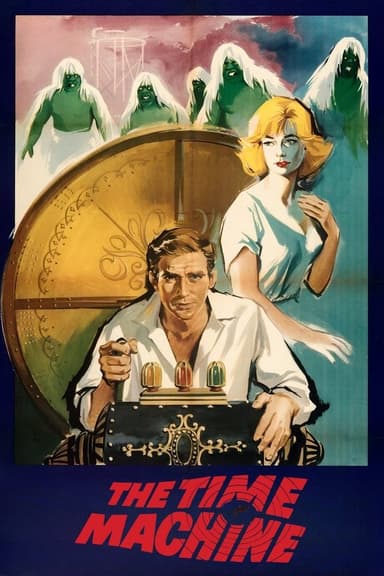
Conquest of Space
1955 • Science Fiction
A team of American astronauts leave their space station on the first mission to Mars, but the captain's religious beliefs may get in the way.
Runtime: 1h 21m
Why you should read the novel
If you're fascinated by the possibilities of human space exploration, 'The Conquest of Space' is an essential read. Unlike the film, the book offers a robust, scientifically grounded vision of potential journeys beyond Earth, informed by the expertise of rocket scientist Willy Ley and the breathtaking artistry of Chesley Bonestell. This compelling blend not only inspires dreams but also demystifies the practical steps required to turn fantasy into reality.
Rather than focusing on melodrama or interpersonal conflict, the book presents a visionary, science-first perspective, intensively exploring real engineering concepts and astronomical phenomena. Ley’s commentary is accessible yet profound, while Bonestell’s illustrations invite you deep into vistas of Mars, the Moon, and orbital space that feel both plausible and awe-inspiring. For readers interested in the nuts and bolts of turning humanity into a spacefaring civilization, this is the foundational text.
Choosing the book means immersing yourself in a credible, well-researched, and visually stunning guide to the cosmos. It’s not just an adventure story but an invitation to imagine—and understand—how we might someday conquer space for real.
Adaptation differences
The most significant difference between the film and the book is that 'The Conquest of Space' (the book) is not a narrative novel, but a visionary popular science work. It details the technologies and societal changes necessary for human travel into space, while the film creates a dramatic fictional plot and diverse characters embarking on a mission to Mars. This narrative structure is absent from the technically focused and speculative tone of the book.
In the book, the material is largely educational, emphasizing authentic rocket designs, trajectories, possible lunar and Martian missions, and future space stations, all illustrated with Bonestell’s celebrated paintings. The film, on the other hand, invents personal conflicts—like a commander’s religious doubts and a tense father-son dynamic—that are completely absent from the original text. This emotional and moral drama does not reflect the book’s priorities.
Furthermore, the film takes considerable liberties in extrapolating technology and mission details. Its depictions of spacecraft interiors, hazards faced en route to Mars, and even scripts for space discipline are heavily dramatized or wholly invented for entertainment. The book’s approach is based on then-current scientific knowledge and realistic speculation, making it more informative and forward-thinking than the more fantastical or sensational sequences present in the movie.
Overall, while the movie provides a visually striking, story-driven piece of mid-century science fiction, the book stands apart as a serious, detailed, and thoughtfully researched work. Reading it offers a more authentic insight into the ambitions and dreams of early space advocates, distinct from the Hollywood-inspired narrative and stylings of the film.
Conquest of Space inspired from
The Conquest of Space
by Willy Ley, Chesley Bonestell



